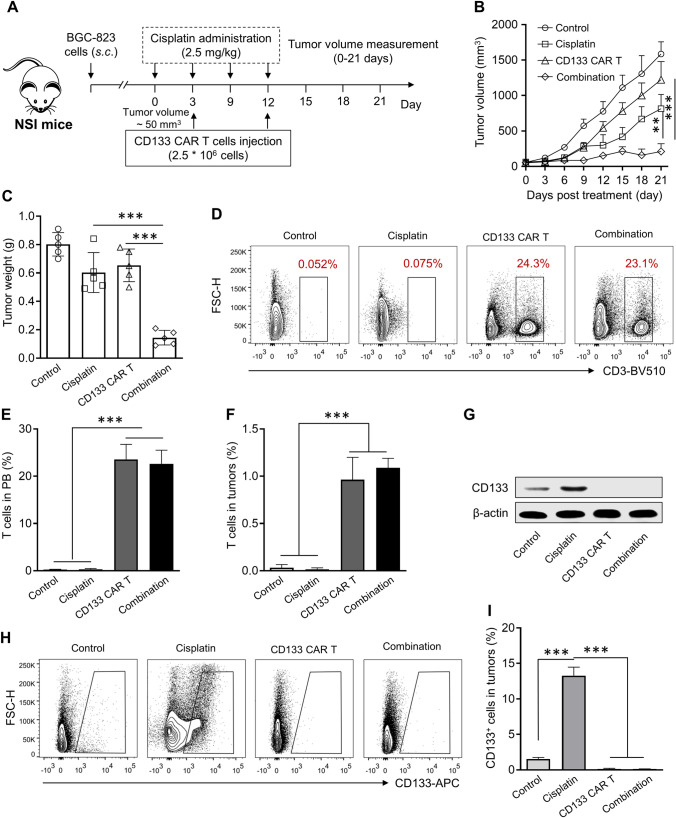Fig. 4.
Anti-CD133 CAR-T cells and cisplatin efficiently reduce tumor progression in BGC-823 xenograft models. a Schematic representation of the treatment strategy. The subcutaneous BGC-823 tumor model was established by injecting 1*106 BGC-823 cells into the right flank, and the antitumor study started when tumor volume reached about 50 mm3, five mice per group. b Tumor growth curve. Data represent means ± SD. n = 5 mice. **p < 0.01, ***p < 0.001. c Tumor weight was assayed. Mice were sacrificed at the 22-day post the first treatment, and tumor tissues were collected and weighted. Data represent means ± SD. n = 5 samples. ***p < 0.001. Representative FACS plots d and the percentage of T cells in the peripheral blood e in different groups at the end of the antitumor study. Data represent means ± SD. n = 5 samples. ***p < 0.001. f Percentage of T cells in the tumor tissues in different groups at the end of the antitumor study. Data represent means ± SD. n = 5 samples. ***p < 0.001. g The protein level of CD133 in the tumor tissues receiving different treatments. Representative FACS plots h and percentages of CD133 positive cells in tumor tissues i in different groups at the end of the antitumor study. Data represent means ± SD. n = 5 samples. ***p < 0.001

